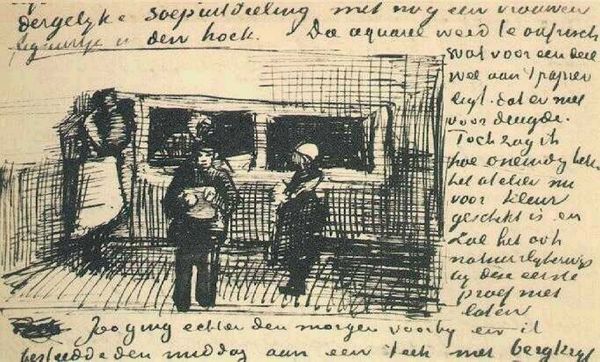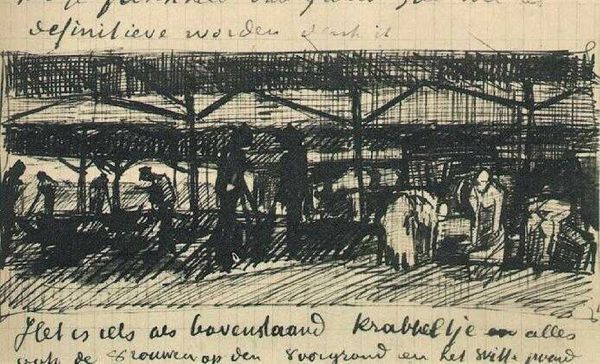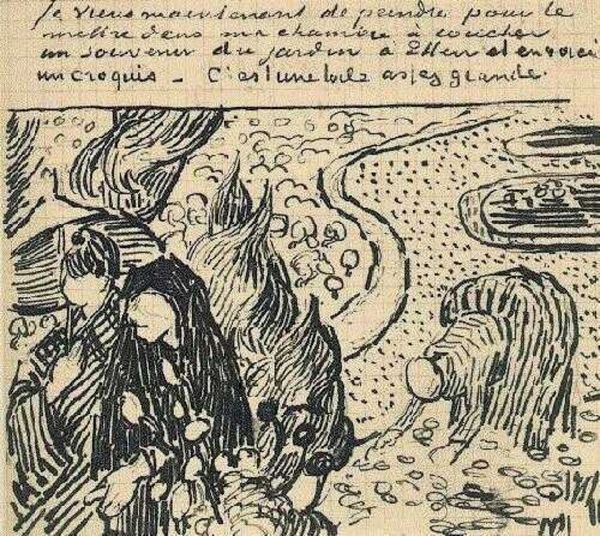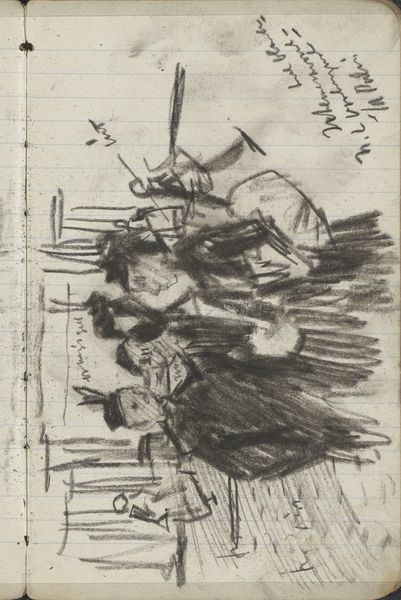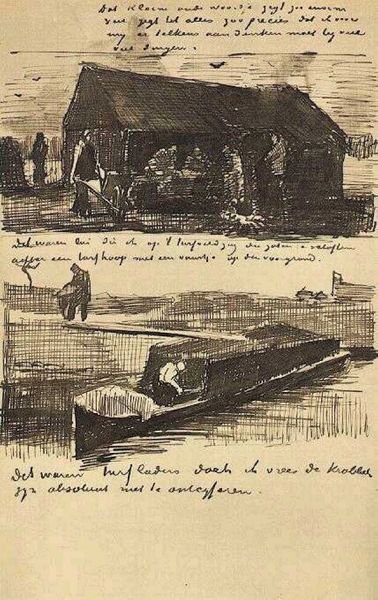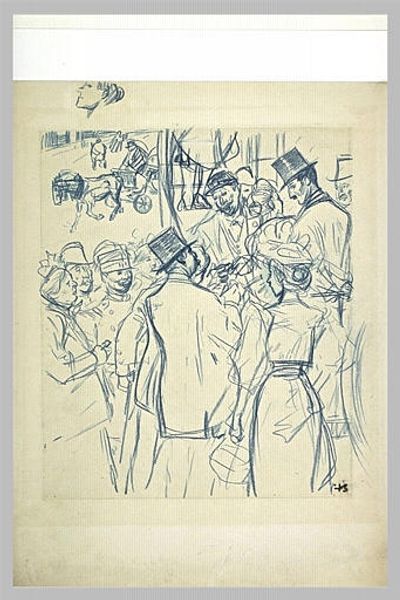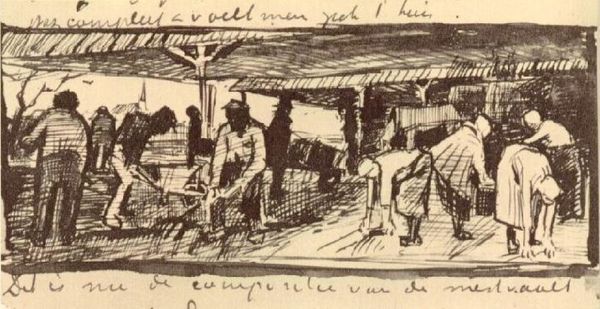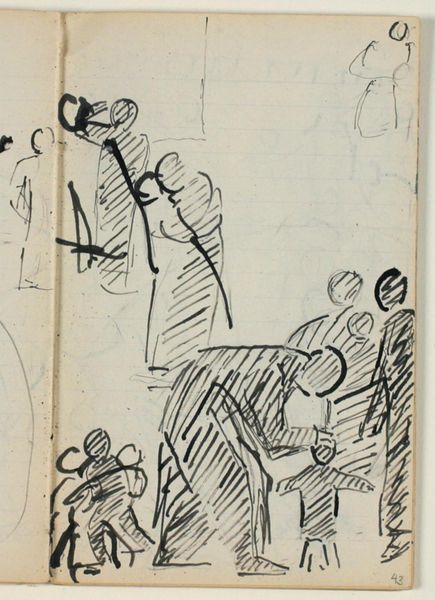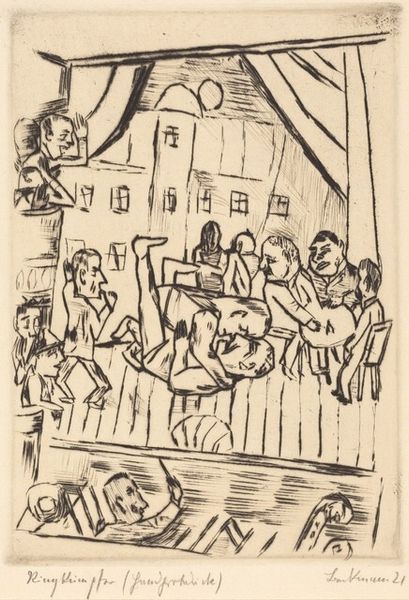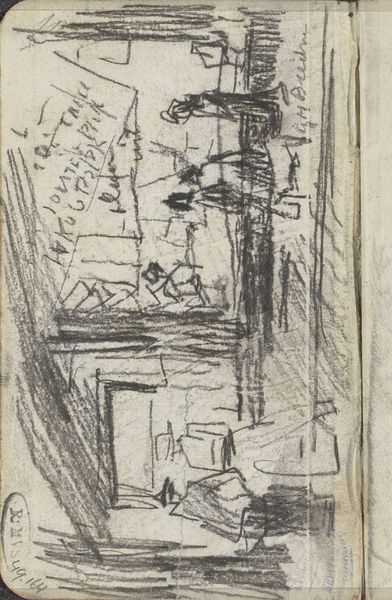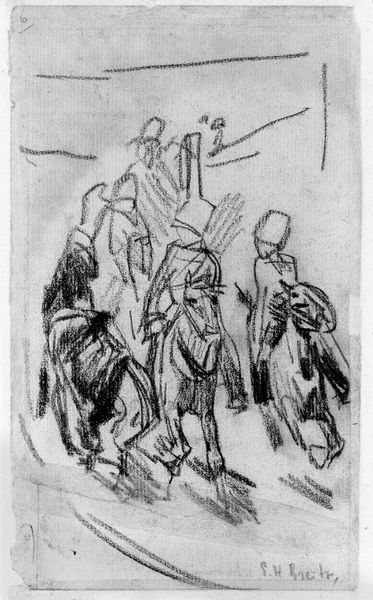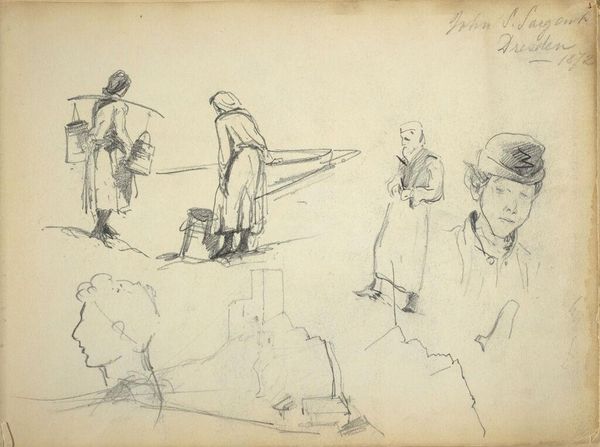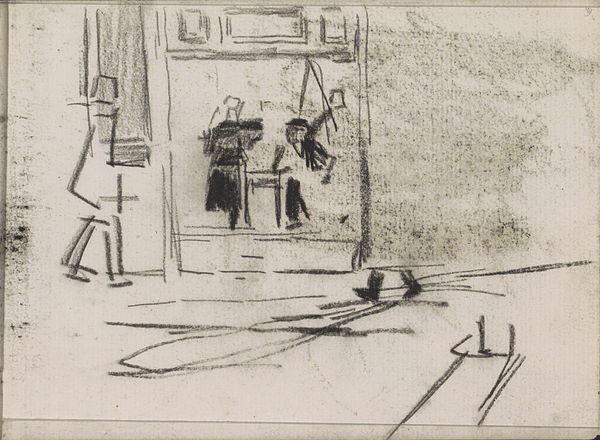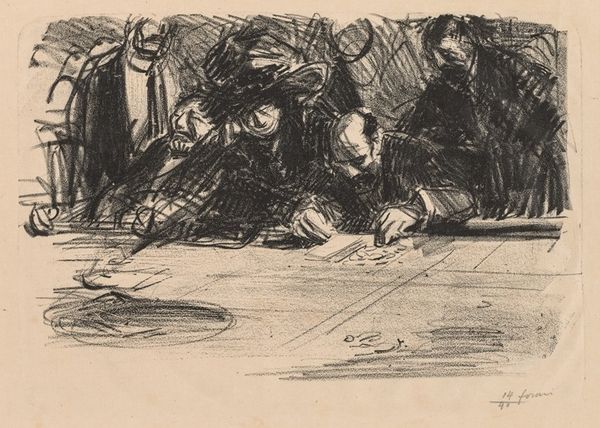
drawing, paper, ink
#
portrait
#
drawing
#
impressionism
#
paper
#
ink
#
genre-painting
Copyright: Public domain
Editor: This is "People in the Studio" by Vincent van Gogh, a drawing from 1883 rendered in ink on paper, currently held at the Van Gogh Museum in Amsterdam. I find the sketch hurried yet compelling, full of energy but what does it all mean? How do you interpret this work through its formal qualities? Curator: One observes a dichotomy, an interplay between representation and abstraction inherent to its construction. Van Gogh utilizes line not merely to define figures, but also as an expressive element itself. Observe the varying thickness and direction of the lines: they generate a sense of movement, a certain visual rhythm across the surface. What purpose might that rhythm serve? Editor: Perhaps to capture the essence of these figures in transit or in quiet observation, with those harsh lines reflecting some of that era’s social reality? Curator: Possibly. Furthermore, the composition rejects traditional notions of perspective, flattening the spatial relationships. We lack a clear sense of depth; figures seem superimposed upon the background, integrated into a unified visual plane. This is important, and challenges any narrative we might be tempted to impose. Editor: So it’s less about what they are doing, and more about how Van Gogh constructs them using lines and space? Curator: Precisely. The focus shifts towards the materiality of the drawing itself – the inherent qualities of line, texture, and composition, freeing us from relying on outside factors. What would you say is the primary formal element? Editor: It's hard to ignore the presence and density of those dark, urgent lines! Curator: Indeed. Through his masterful manipulation of these intrinsic visual components, Van Gogh transcends mere depiction and moves into the realm of pure expression. We grasp the inherent tensions, those powerful diagonals that reveal to us how those pictorial devices constitute the heart of this genre scene. Editor: I hadn’t considered that! Now, looking again, I’m appreciating the dynamic construction that surpasses simple depiction. Thanks!
Comments
No comments
Be the first to comment and join the conversation on the ultimate creative platform.
